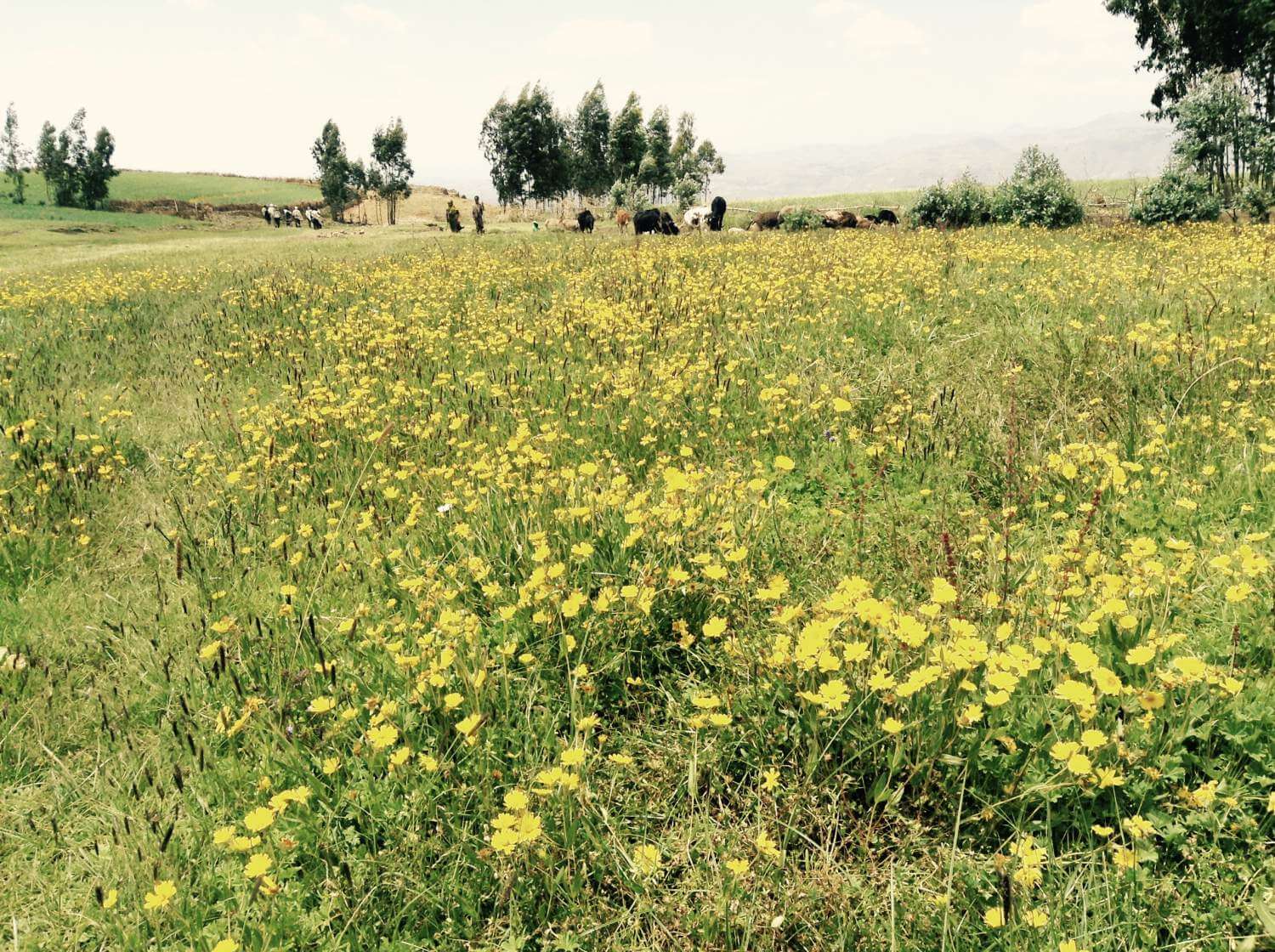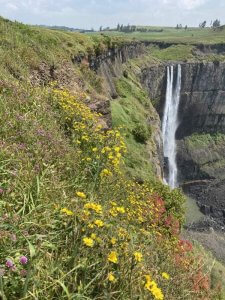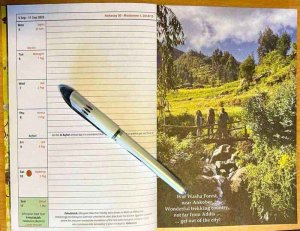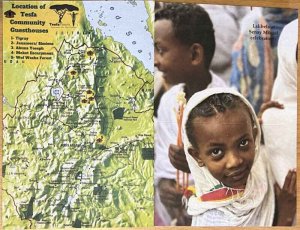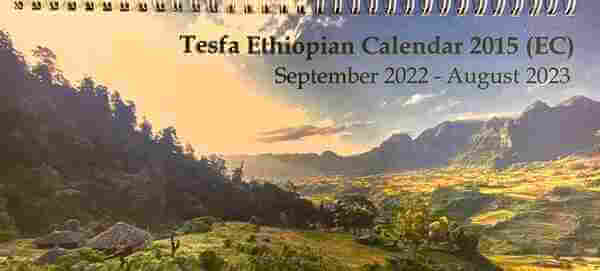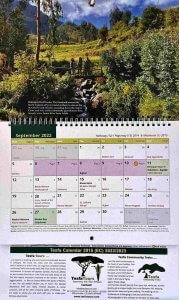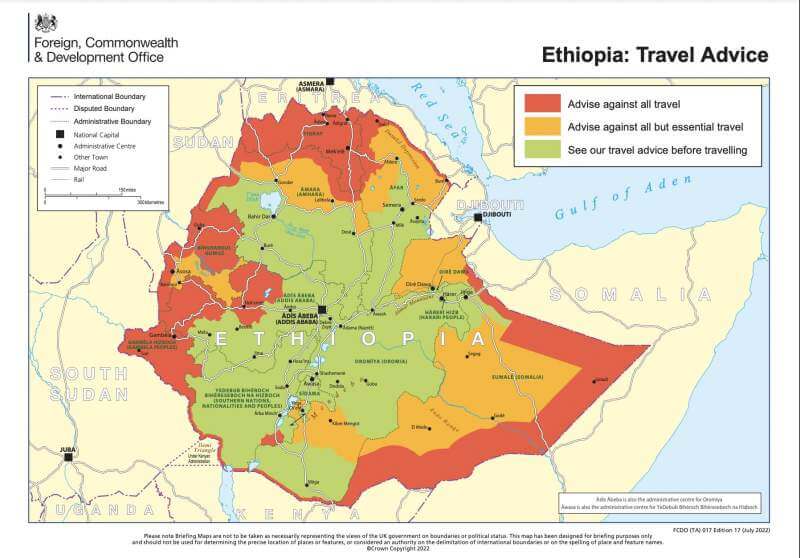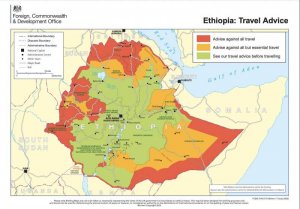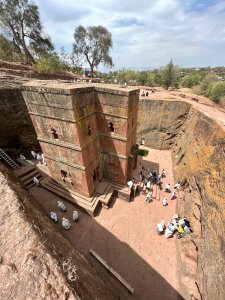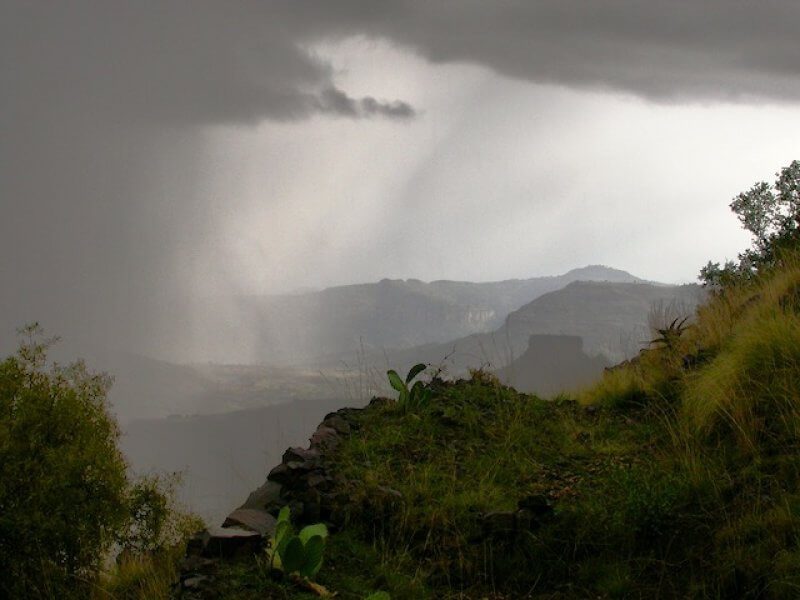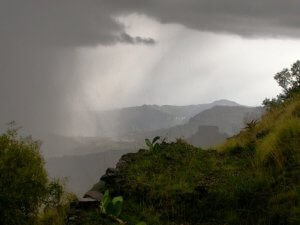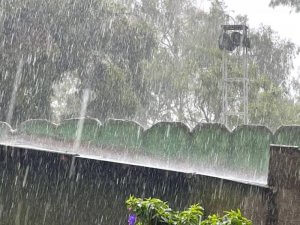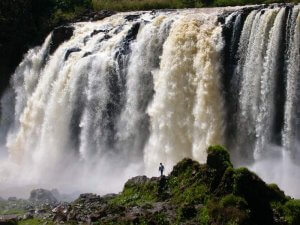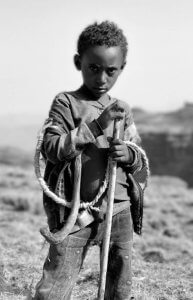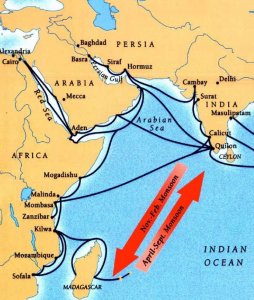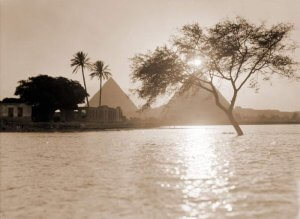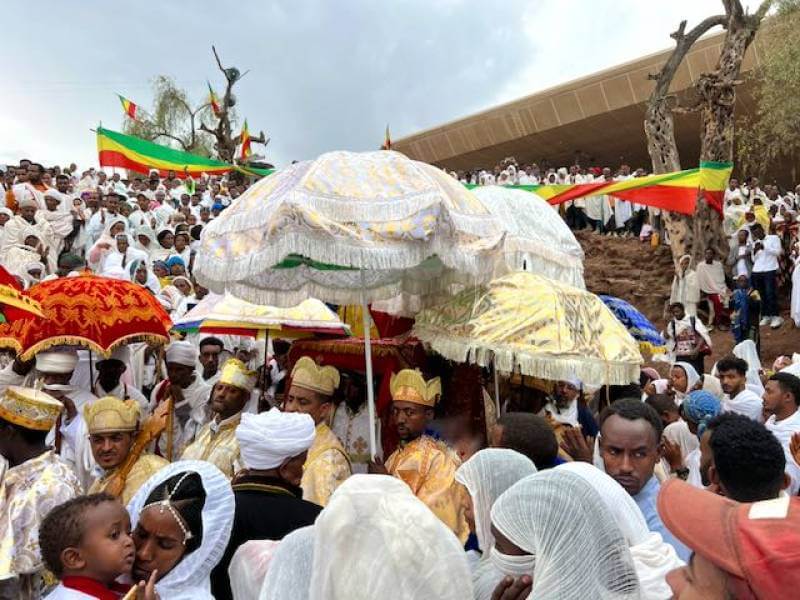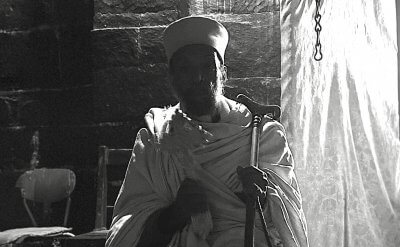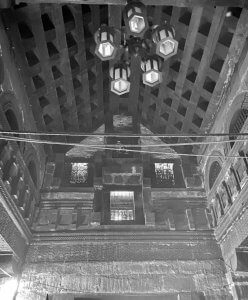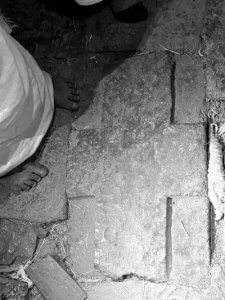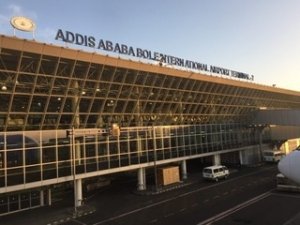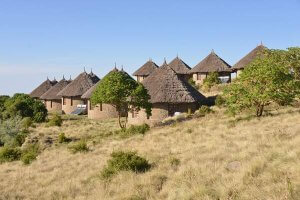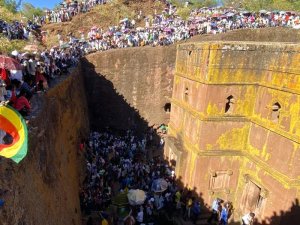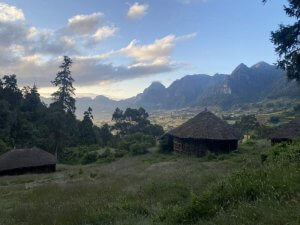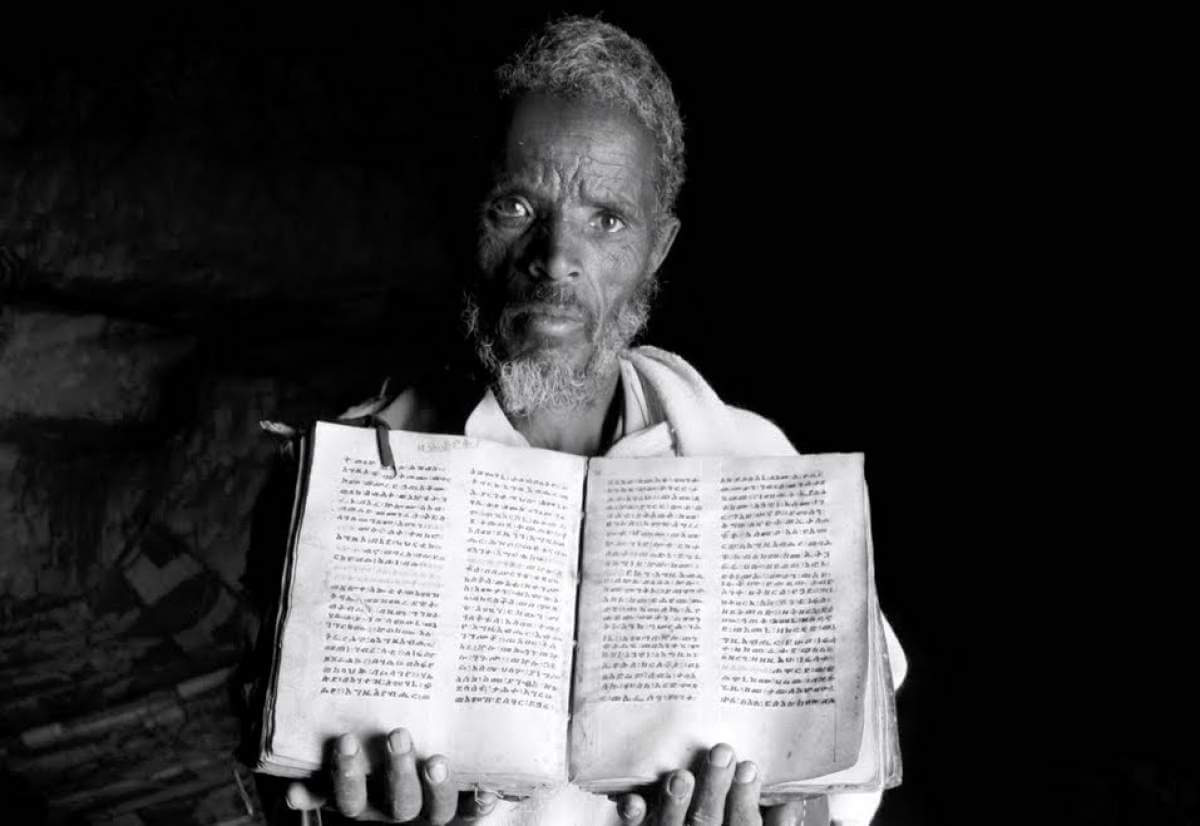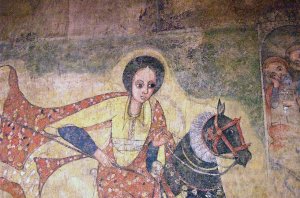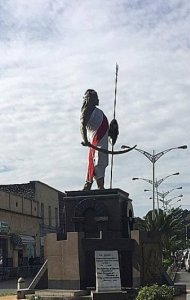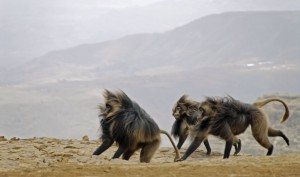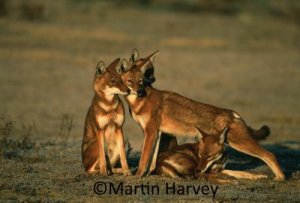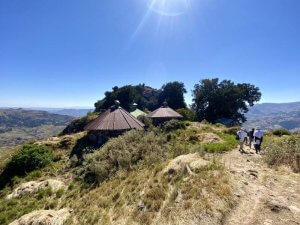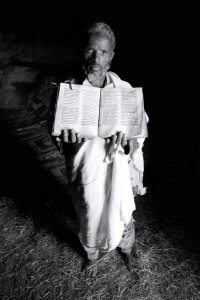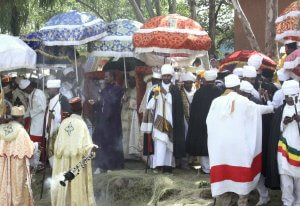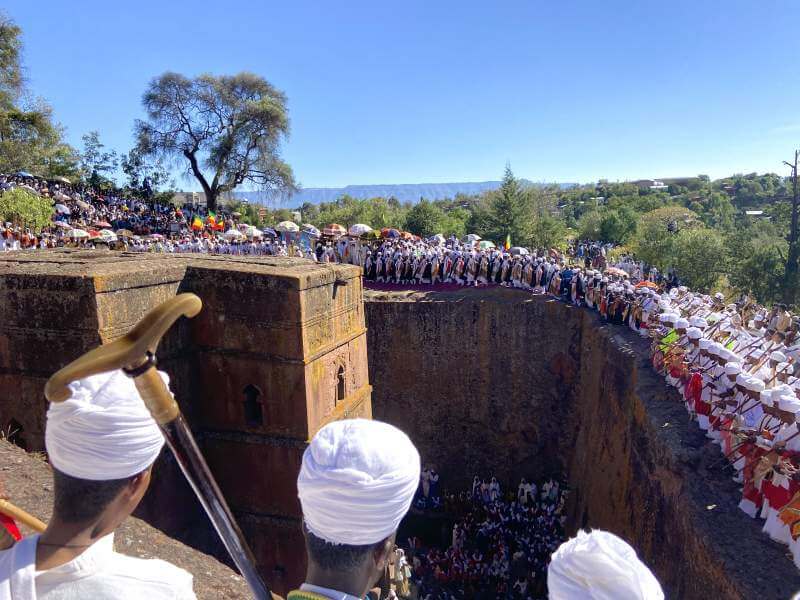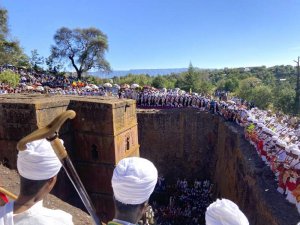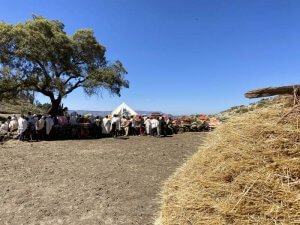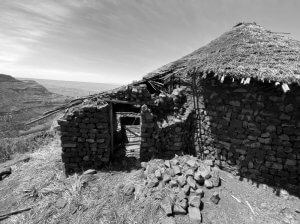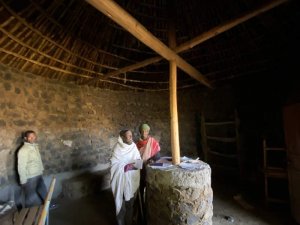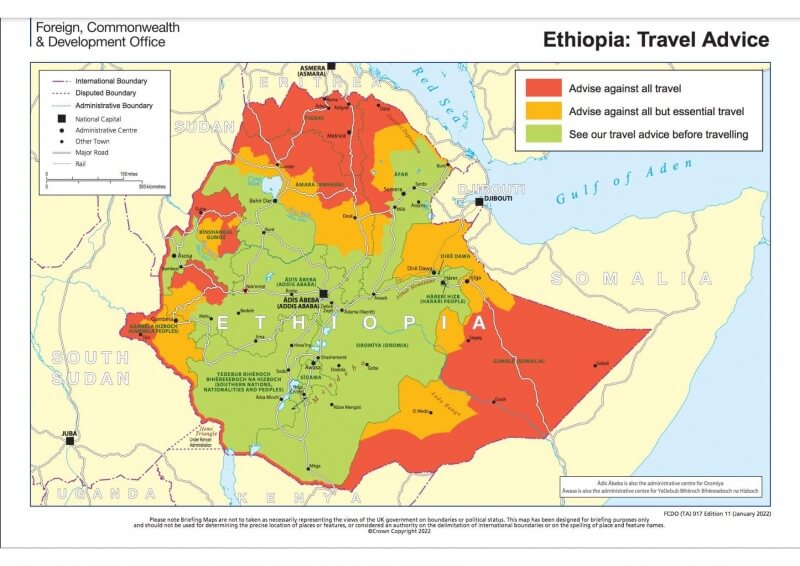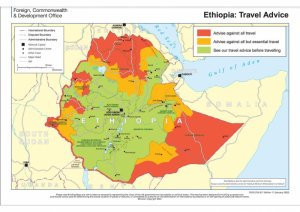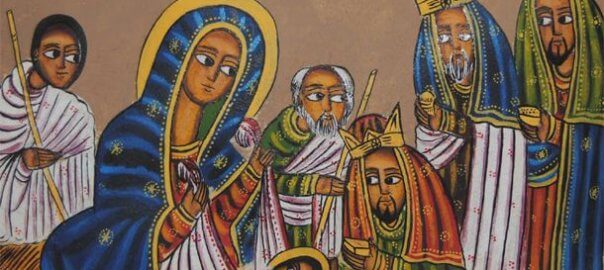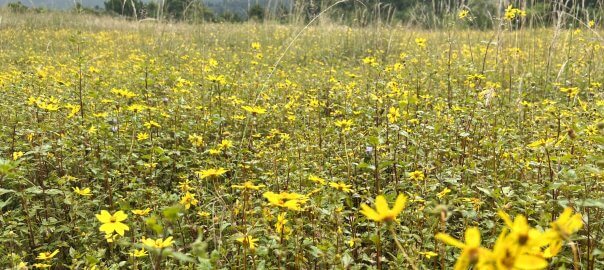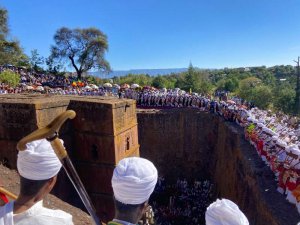
Deacons at Giyorgis festival Lalibela
Is Lalibela safe and ready for tourists?
Many people are asking me about Lalibela, and the predominant question is: “is it safe?” The answer for me it’s very easy: “yes!“.
I have been in Lalibela three times this year: in late January to witness the beautiful Giyorgis (St George) festival and again at the end of May to discuss with our guides and local government how to get several of the community tourism guesthouses back into operation (some have already been hosting hikers); then lastly in mid June. Each time I was well looked after: a very comfortable bed, a working shower with hot water, good food… and cold beer. The last time was with my son and a group of clients to see the special Mikael and St Lalibela celebrations and do some exciting cycling on the mountain above the town (totally awesome)!
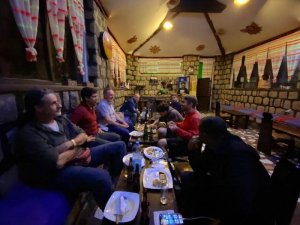
Eating out in Lalibela
What happened in Lalibela?
However, all would-be guests will probably know Lalibela was overrun by the TPLF in the fighting that embroiled much of northern Ethiopia recently. It was a shock to us all when, in August 2021, the TPLF came across the mountains from the road that leads between Mekele and Dessie, through the small mountain village of Muja, catching everyone by surprise. At first nobody wanted to believe it. But in Lalibela it was very real. Most of the guides I know fled down into the lowlands and up onto the plateau heading towards Bahir Dar, and for 3 months the people who remained struggled under occupation with precious little food.
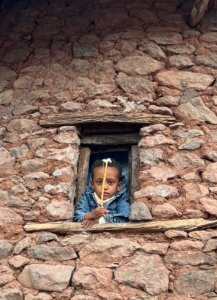
Kids looks through window at Senay Mikael celebrations
At the start of December 2021 government & Amhara forces retook Lalibela, following a government counter-offensive led by PM Abiy in late November. It seemed inevitable that the Tigrayan forces would be pushed back further north. But 11 days later they regrouped and again took Lalibela and some nearby towns. It seems they wanted to secure a line of retreat back to Tigray. In keeping with this, the TPLF retreated out of Lalibela a few days afterwards.
What has Changed now?
So why do I believe it safe to visit Lalibela again now? At the point when Lalibela was taken initially TPLF forces were on the march south into Amhara Region, and it seems they intended reaching to Addis. Now there has been a truce which has stood since March and no real fighting since late December when the Ethiopian forces stated that they wouldn’t advance into Tigray. In addition aid trucks are delivering humanitarian assistance to Tigray in increasingly more significant quantities, which was one of the demands of the TPLF and their stated reason for advancing towards Addis. It doesn’t seem that either side wants to resume full scale fighting and although it is slow, diplomacy is inching forward. It’s widely assumed that if fighting did resume, it would be over the disputed territory to the west of the Tekeze bordering Sudan. This area is north and west the Simien mountains and a very long way from Lalibela.
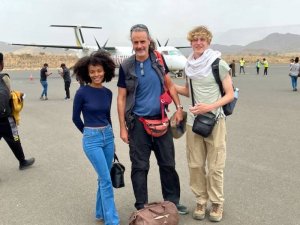
Tesfa team at Lalibela A/P
I don’t see any risk to be in Lalibela as a tourist at this time. There is a functional airport with regular flights linking the town to Addis Ababa, as well as a good road to connect to Bahir Dar and places further south. That many western governments still have Lalibela painted red on their travel advice is an anathema to me! It defies logic. Especially since many ambassadors (including the US ambassador) visited Lalibela in May this year and pronounced it safe!
Lalibela Needs Tourists to visit
On top of the inaccuracy, it is stopping people visiting Lalibela, when the town is crying out for assistance. Lalibela derives most of its income from tourism, and without tourists visiting, thousands of people are struggling to make ends meet. It is not just the hotel staff and the guides, there are drivers, musicians, shop owners, carpenters, mechanics, you name it – all are struggling.
Many hotel owners are keeping their hotels operating in Lalibela in the hope that tourists come. They have bought
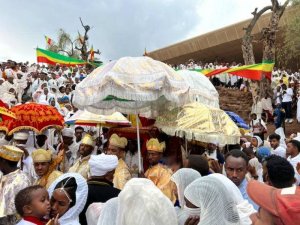
Tabots paraded at Senay Mikael Festival
generators so that they can provide guests with power to heat water for showers and recharge phones. Keeping their hotels open is actually costing them money. The guides are so eager to show their guests around the extraordinary 800 year old churches that are carved out of the bedrock with a labyrinth of tunnels connecting them. In fact everyone in the town is welcoming and happy to see the few foreigners who have made it to visit Lalibela, and people are doing their best to make those that come feel welcome.
Lalibela is truly an incredible place.
In recent years it was becoming overrun by the volume of tourists visiting. Now you can visit in peace, with just the rhythmic chanting from the priests, to the deep beat of the big Kebero drums, and a tinkle of the sistrum an ancient rattle that dates back to pharaonic Egypt.
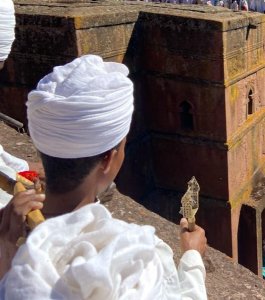
Deacon using sistrum in Lalibela
On a festival you may see the holy Tabots wrapped in brocaded cloth and carried under an umbrella, paraded out of the church. Or just spend a few hours in contemplation in once of the ancient churches, observing the spiritual life of the church.
You will be reminded of the how ancient is Lalibela and it’s orthodox church. Its history has fingers that go deep back into a past shrouded in mystery, way deeper than any western church. And the rural life of the farmers, who have now ploughing their land with teams of oxen, and are sowing the seeds by hand, for a crop that they can harvest in November and December, is also a very ancient way of life. The Tesfa Community treks in the surrounding mountains are the best way to see and experience this way of life.
I urge any of you with a desire to come and explore, to travel to Ethiopia soon. You will be greeted with big smiles and a hospitality that leaves you humbled.

